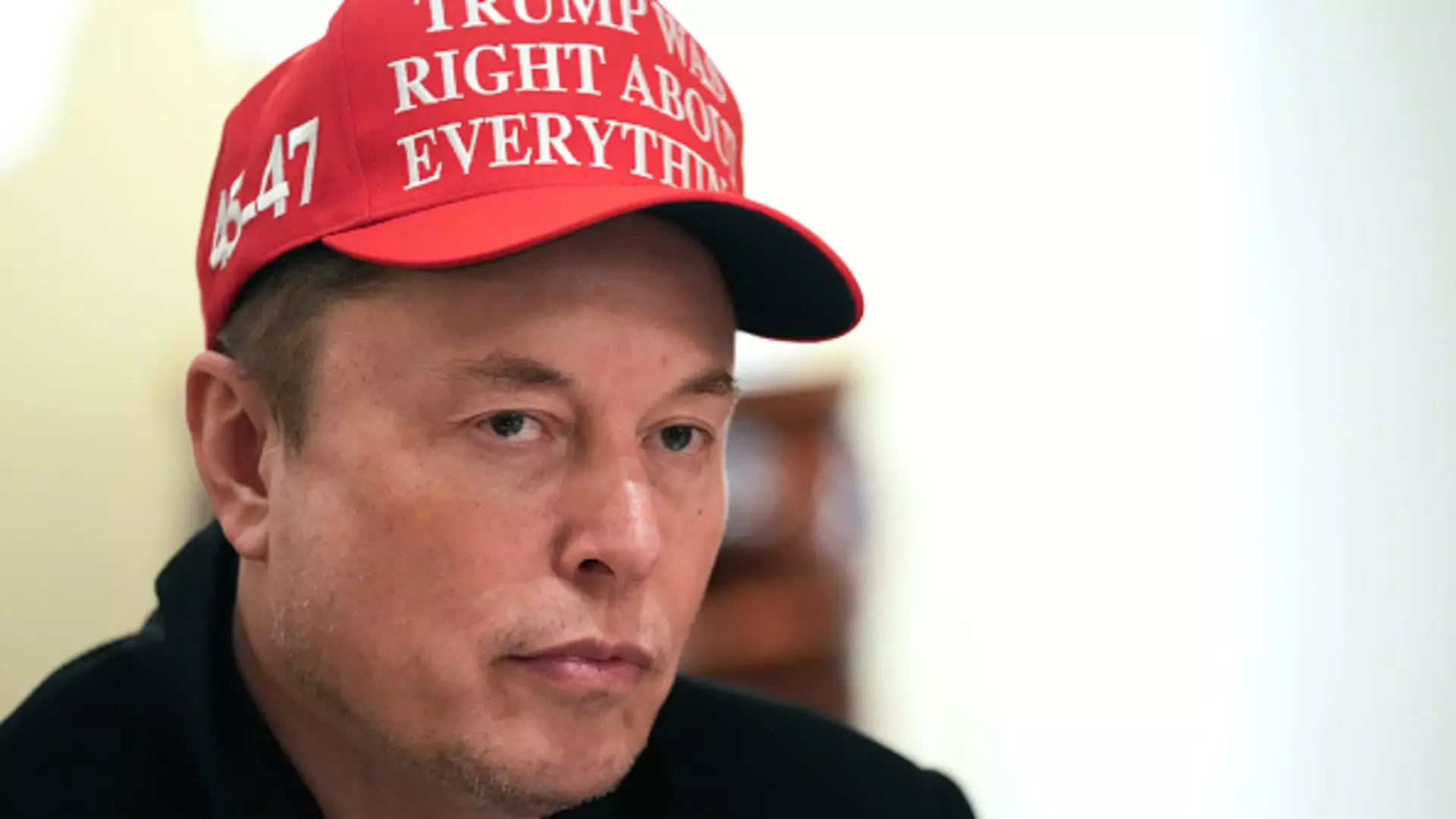Tesla’s recent stock performance has drawn concerns from analysts and investors alike, particularly as the company braces for its first-quarter earnings report. The stock price dipped nearly 6% in one day, closing at $227.50—alarmingly close to its annual low of just under $222.50. In a year characterized by volatility, Tesla’s shares have plummeted 44%, marking its most challenging quarter since 2022. This drop is compounded by an unsettling trend of frequent single-session declines, with the stock witnessing a fall of at least 5% on 12 separate occasions this year. Such a persistent decline raises pressing questions about the sustainability of Tesla’s brand and market position as it navigates the choppy waters of the automotive industry.
The Factors Behind the Decline
Central to this concern is the notion of “ongoing brand erosion,” which analysts emphasize is a significant hurdle for Tesla, particularly in markets like the U.S. and Europe. Compounding these issues is CEO Elon Musk’s controversial role in politics, most notably his involvement with the Trump administration. This political engagement has not only drawn ire but has also led to a considerable backlash against the brand itself, with protests and boycotts emerging in response to Musk’s actions. As the leader of a company that once symbolized innovation and sustainability, Musk’s political affiliations have muddied the waters, leading investors to question the long-term implications for the brand.
Analysts suggest that these political distractions are not merely superficial; they have tangible effects on investor sentiment and consumer perception. An alarming statistic emerged from a recent survey indicating that the percentage of consumers considering a Tesla purchase has slumped from 46% in January 2022 to just 27% in March 2023. This dip may indicate a more profound shift in consumer attitudes, potentially driven by Musk’s political associations rather than the quality of Tesla’s innovative vehicles.
The Brand’s Response to Consumer Sentiment
In light of these challenges, Tesla must foster an environment of openness and engagement with its shareholders. The investor inquiry forum reveals a notable trend—the pressing focus on Tesla’s autonomous driving capabilities and the anticipated Optimus humanoid robots. Analysts noted over 300 queries related to self-driving technologies, suggesting that investors are clinging to Tesla’s potential in technological advancements as a glimmer of hope among the uncertainties. However, the frequent reddening of Tesla’s stock price calls for a serious recalibration of its marketing strategies and product positioning.
Tesla now finds itself in a precarious situation where it must balance advancing its ambitious tech projects while addressing the deteriorating brand image. Investors have turned their attention to how the board of directors and Musk can repair the brand’s reputation, particularly in light of the political cloud hanging over the company. One pressing question raised by an investor highlights this issue: “What actions is the board taking to mitigate brand damage?” This signifies a growing unease among stakeholders as they look for clear initiatives rather than ambiguous promises.
Global Market Dynamics and Competitive Pressures
Compounding Tesla’s domestic challenges is the competitive landscape in China, where foreign brands are increasingly feeling the heat from local manufacturers driven by nationalistic consumer sentiments. The Oppenheimer analysis indicates that Teslas may face diminished demand and threaten to weaken margins due to Trump-era tariffs. With growing competition in this pivotal market, Tesla risks ceding its market share to domestic competitors, prompting analysts to forecast significant pricing pressures if such trends persist.
Moreover, the anticipated pressure on Tesla’s profit margins raises alarms over the robustness of its global strategy. If Tesla finds itself needing to pivot towards exporting vehicles from China, the overall pricing landscape for its product line could shift dramatically, eroding the brand’s profit potential further. Therefore, stakeholders are keenly awaiting insights about Tesla’s strategies for addressing such difficulties, particularly as sales begin to wane in critical international markets.
Looking Ahead: Expectations for the Earnings Call
As Tesla heads into its earnings call, all eyes are on Musk for signals of a “turnaround vision.” Analysts like Dan Ives are hoping for a reinvigorated focus on Tesla’s core competencies rather than the distractions that have plagued the brand. The upcoming earnings report is crucial—not just in terms of financial numbers, but for the messaging surrounding Tesla’s aspirations in self-driving technology and innovation.
The hedge against these tumultuous times ultimately lies in the clarity of Tesla’s direction moving forward. With stock prices hanging in precarious balance and an unsettling consumer perception at hand, Musk and his team must forge ahead with a strategic roadmap that re-establishes Tesla not only as a leader in electric vehicles but as a brand synonymous with trust and inspiration rather than controversy.

